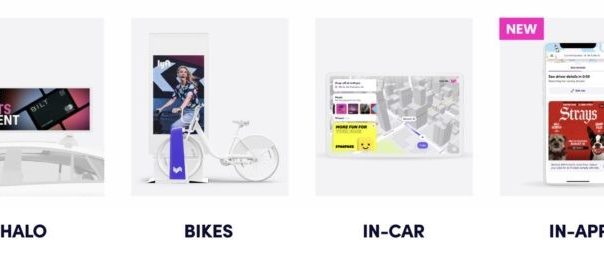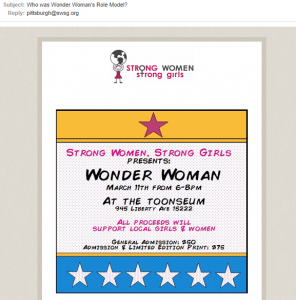By building out their ridesharing ecosystem, Lyft Media has grown 4X in the last year. Riders will see one in-app ad per ride at the program’s start.
This month, Lyft introduced in-app ads to personalize its riders’ experiences and generate more revenue from the Lyft Media ecosystem.
The rideshare service partnered with ecommerce technology company Rokt, which uses machine learning intelligence and its network of advertisers to deliver the right ads to the right Lyft customers in-app.
Lyft Media has added a number of digital and out-of-home touchpoints to make the rider experience more engaging and to provide opportunities for advertisers. As a result, Lyft Media’s revenue has quadrupled in the last year, according to the company.
Why we care. As we’ve seen in retail media networks (RMNs), sellers with loyal customers and engaging experiences can drive more sales for advertisers when the buyer journey is managed intelligently. The trick is that every retailer and customer base is different, and new opportunities arise based on the retailer’s specific strengths.
What it is. Lyft’s unique journey takes riders from the app to an in-car experience where they have the customer’s complete attention. The ridesharing experience and media ecosphere show how hundreds of millions of North American customers annually are getting from place to place for travel needs and entertainment. The company has 26% of ridesharing’s U.S. market share, to Uber’s 74%, according to Bloomberg Second Measure. Lyft averaged $ 87 per transaction in July 2022, up 12% YoY.
In-app ads. The new ad partnership with Rokt went live on August 9. With this partnership, riders will be served ads in-app while viewing their ETA screen, when they match with a driver and during the trip.
Riders check their phones an average of nine times during their Lyft ride.
“Advertisers get 100% share of voice to reach riders in relevant and contextual ways as they head out to eat, shop, and run errands with ads that are dynamically rendered to form-fit the app,” said Zach Greenberger, chief business officer for Lyft.
He added, “At launch, a rider will only see one poster ad during each ride. Targeting is based on first-party data such as payment method, ride history, ride area, and lifestyle segments.”
“We’re excited to expand our existing partnership with Lyft as a launch partner in this new channel,” said Zoe Oz, CMO at Bilt Rewards. “Bilt is all about contextual marketing and meeting people where they already are. So while most of our marketing is in rental buildings via our real estate partnerships, a Lyft ride to and from someone’s home is another great way to target relevant messages to customers in their daily lives.”

Rokt technology. Rokt uses machine learning to optimize the best contexts and ad forms to serve customers in-app, drawing from a number of advertisers in the closed Rokt network, including Hulu, AMC Theatres and HelloFresh.
Rokt’s use cases began with ticket-buying services. When customers buy a ticket to an event, Rokt’s technology sends a promotion that fits contextually with that event based on location, interest or other relevant tie-ins.
A passenger might receive an AMC Theatre ad for a movie that’s playing near the rider’s destination. Or the rider might receive a promotional offer from Hulu to subscribe to the streaming service.
Rokt’s intelligence is driven by billions of ecommerce transactions. Businesses partnering with Rokt’s closed marketplace have captured incremental profitability of over $ .30 per transaction..
Because Rokt’s machine learning improves over time, the company looks for enterprise businesses for future partnerships, or for companies with a high volume of transactions, said Jon Humphrey, VP of solutions and product marketing for Rokt.
Growing ad network. In addition to this partnership with Rokt, Lyft Media has a growing number of advertisers, including Bilt Rewards, Audible, Universal Pictures and others.
In addition to in-app ads, which are available nationwide, Lyft Media offers other digital and out-of-home opportunities to advertisers. In-car tablets are available in 12 markets. Screens on top of Lyft cars are available in 5 marketers. Lyft also has out-of-home ads on bike sharing stations in four markets.
Measurement. Lyft Media has also partnered with Kantar Brand Lift Insights for awareness metrics, purchase intent and brand association measurement.
“Reporting at launch will include clicks, impressions, and an optional brand study via Kantar’s Brand Lift Insights,” said Greenberger.

Tablets. Lyft has tablets in 6,000 cars in 12 markets, reaching over 1 mllion riders per month. Riders are using them as an alternative to the phone app when they are in the car. Additionally, riders can use the tablet to improve their experience by controlling the music in the car, tracking their progress on a map and tipping their driver.
The company found that when drivers decide to place a tablet in their cars and give at least 60 rides per week, the tablet boosts their tips by 10% on average compared to drivers who don’t have a tablet.
This is another indication that when a rider’s experience is relevant and helpful, the other parties involved in the ride can benefit.
The post Lyft introduces in-app ads as part of an expanded rider experience appeared first on MarTech.
(2)






